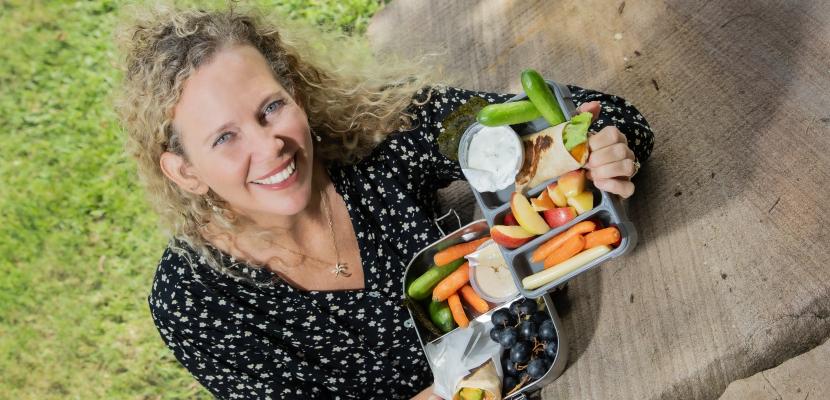
What do an 18th century sailor and five percent of Australian children have in common?
The answer to this question is no punchline. A recent study at an Australian children's hospital found five percent of those tested showed clinical signs of scurvy.
Once common among those stranded at sea with no access to fresh produce, scurvy is caused by vitamin C deficiency. It’s a disease we once thought had been eradicated.
But sadly, we are starting to see a rise in these nutritional deficiencies among the youngest in our society.
The same children’s hospital study found nearly one-third of children tested had low vitamin C levels, a precursor to scurvy.
The Australian Dietary Guidelines for Children, based on evidence from thousands of high-quality scientific studies, provide clear recommendations for what children need to thrive.
But as we’ve seen from recent research and media reports, many Australian children aren’t always getting the nutrition they need during these critical years of growth and development.
A recent national nutrition survey found 36 percent of children do not eat enough fruit and a staggering 96 percent fall short of the recommended daily vegetable intake.
Iron levels are also impacted by poor nutrition. Iron plays a vital role in carrying oxygen through the blood which, if low, can cause fatigue, irritability, and slower development.
Nationally, around eight percent of children under five are estimated to have anaemia, with iron deficiency as the leading cause.
Iron is also essential for a strong immune system, meaning low iron can make children more prone to frequent infections.
But providing the right nutrition in childhood does more than prevent illness – it supports attention, learning, emotional regulation and lifelong health.
The eating habits children develop now often track into adulthood.
Yet one-third of energy in children’s diets is coming from discretionary or “sometimes” foods — those high in salt, sugar, and saturated fat.
These foods take the place of more nutritious options, leading to diets lacking in essential nutrients and fibre.
Good nutrition during childhood plays a foundational role in learning, behaviour and even lifelong health.
But too many of their diets lack vital nutrients, essential fatty acids, quality protein and fibre — all of which are critical for the healthy growth and development of children.
Here are some excellent choices of nutritious foods for young children and the nutrients they provide:
- Nori sheets – A fun, crunchy snack and a natural source of iodine — a key nutrient often lacking in Australian diets due to our naturally iodine-poor soils. Iodine is important for growth, brain development and healthy thyroid function, especially in early childhood.
- Boiled eggs – Packed with protein and iron, supporting growth, brain development and satiety.
- Greek yoghurt (plain) – A great source of calcium for bone health and protein for growth; also supports gut health with probiotics.
Tip: Add frozen berries to sweeten and add antioxidants
- Nuts and seeds – A nutrient-dense snack rich in healthy fats, protein, iron, vitamin E, zinc, and magnesium. Pumpkin seeds, cashews, almonds, and chia seeds are especially good sources of plant-based iron. A small handful can be a satisfying, brain-boosting snack or a great topping for yoghurt or porridge.
Tip: In nut-free settings like many schools or childcare centres, try safe alternatives such as sunflower seed butter or roasted chickpeas as allergy-friendly options.
- Tinned tuna, salmon or sardines – High in omega-3 fatty acids (DHA), iron and protein, essential for brain development.
- Baked beans or lentils – Rich in iron, zinc, fibre, and plant-based protein, baked beans are best served warm, while lentils can be added to wraps, pasta sauces, or salads.
Tip: Look for salt-reduced versions.
- Cut fruit (fresh or canned in juice) – Provides vitamin C, fibre, and natural sweetness; supports immunity and iron absorption.
Tip: Rub apple slices with a cut lemon to prevent it from oxidising and turning brown.
- Wholegrain bread or wraps – Higher in fibre and B vitamins compared to white bread, supporting digestion and energy metabolism.
Fill with a protein-rich food like tuna, add veggies such as spinach and avocado, and a slice of cheese for calcium and taste.
Tip: Toast the wrap in a sandwich press to melt the cheese — this helps hold everything together and makes it easier (and tidier!) for little hands to eat.
- Carrot sticks with hummus – Offers fibre, vitamin A, iron and healthy fats; a great crunchy, satisfying option.
- Baby cucumbers or mini capsicums with tzatziki – Crunchy, hydrating, and naturally portion-sized. A great source of vitamin C, fibre, and, when paired with tzatziki, a boost of protein and calcium from the yoghurt-based dip.
- Mini frittatas or veggie muffins – A creative way to boost protein, vegetable intake, and iron in one easy meal. Tip: Frittata or veggie muffins can be baked ahead of time then frozen and thawed in the morning before school/childcare.
By investing in what we feed our children today, we’re shaping the health, resilience, and potential of future generations.
Carolyn English, PhD, RNutr is a Senior Teaching Fellow in the Faculty of Health Sciences & Medicine atBond University